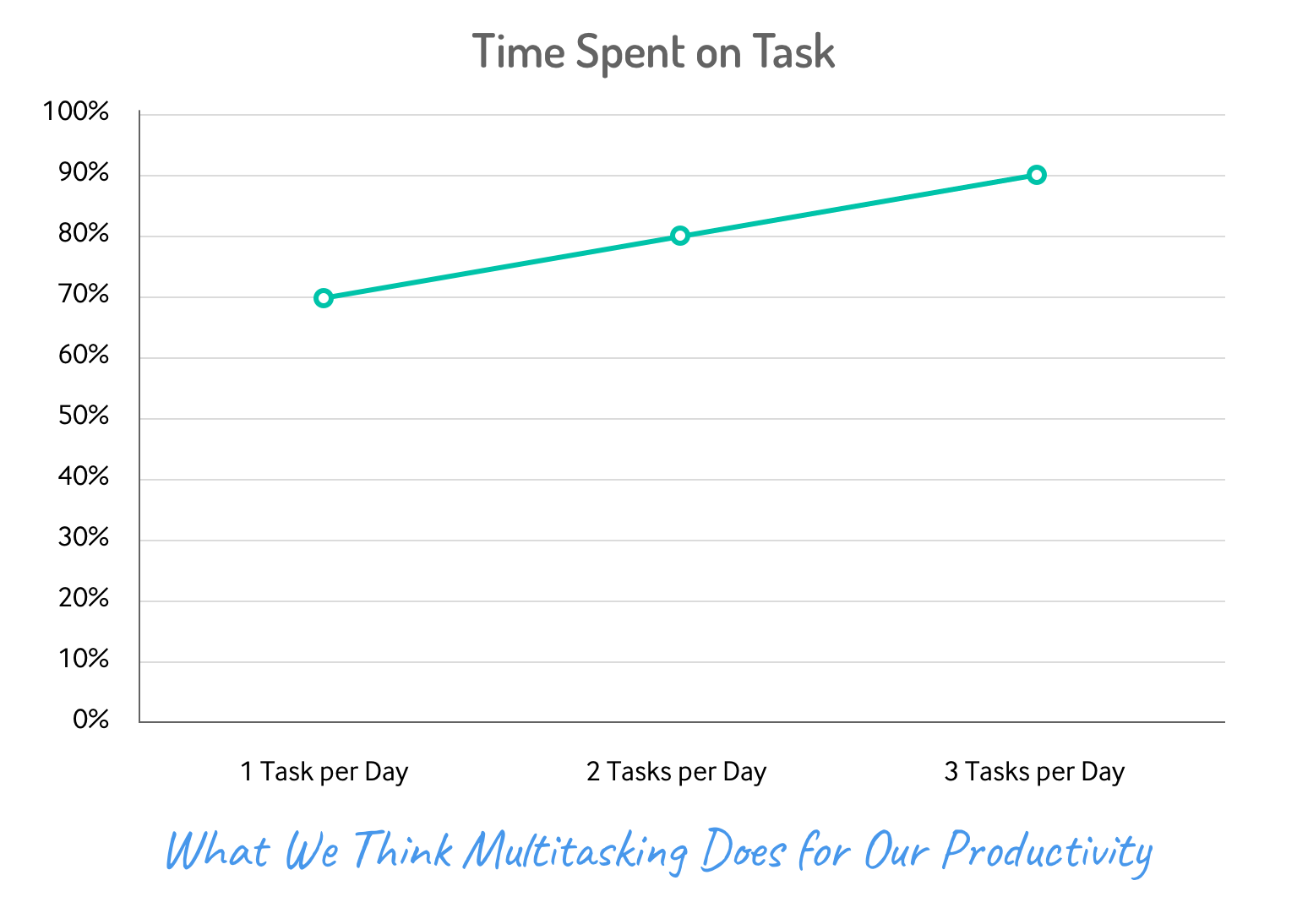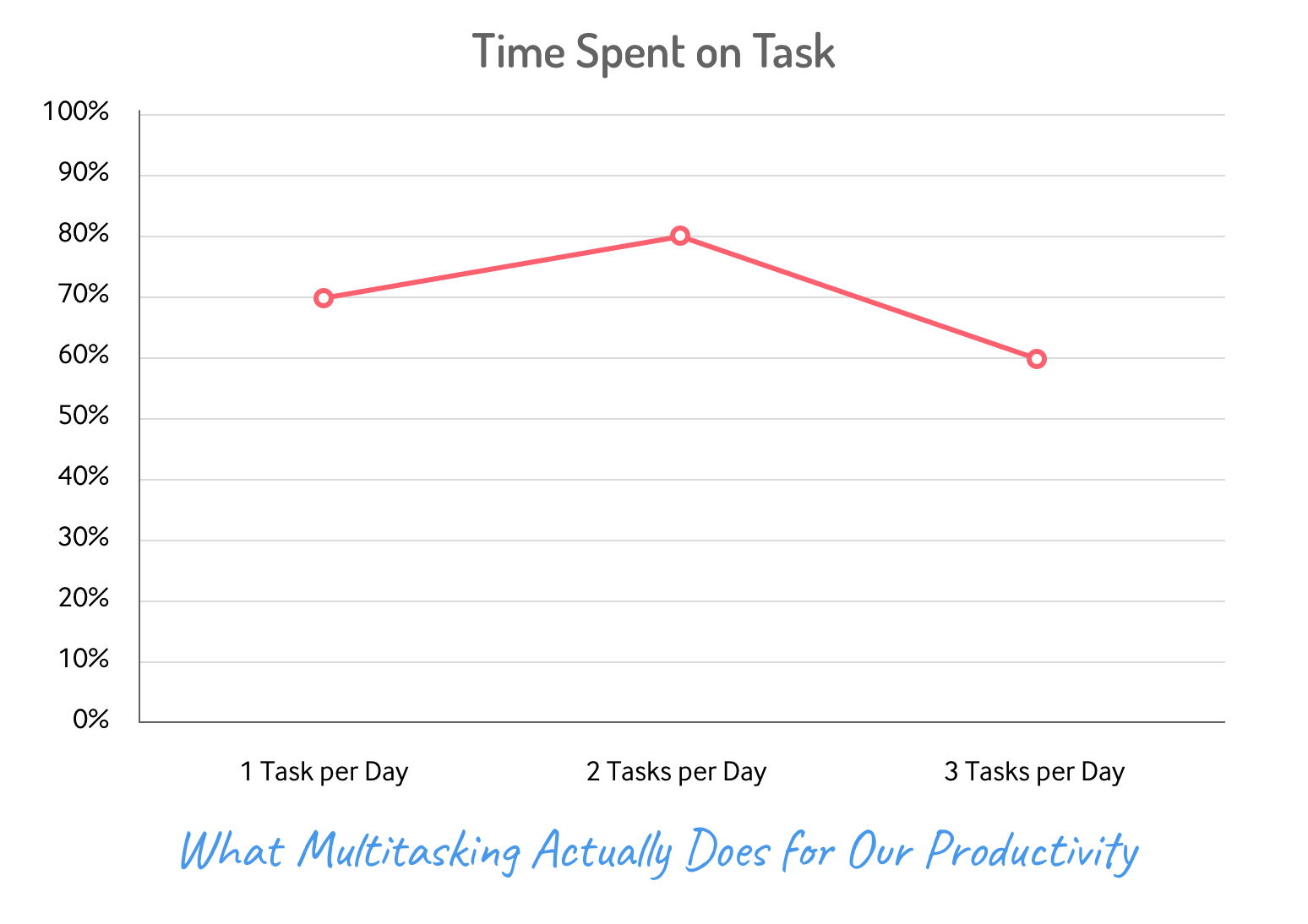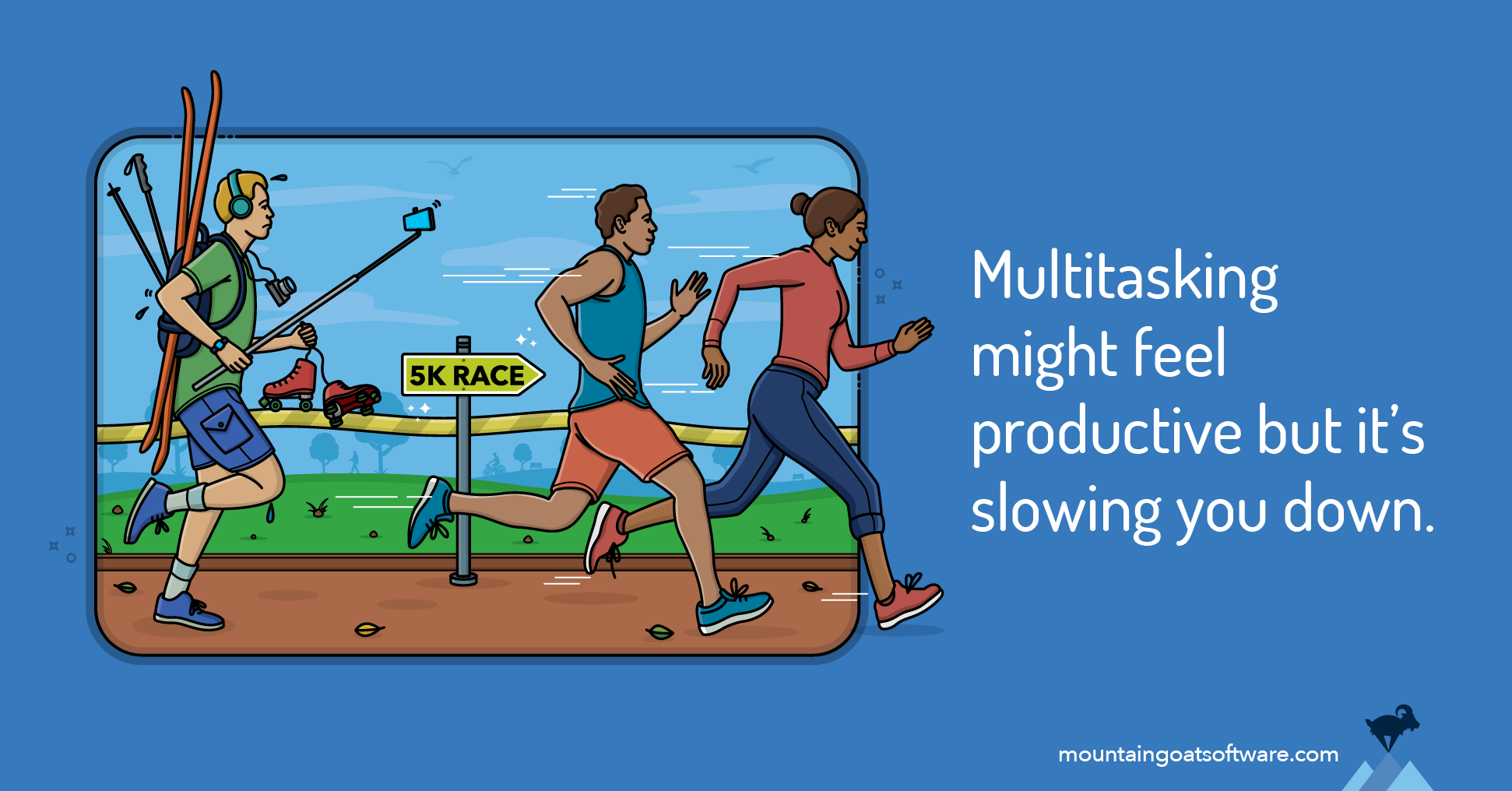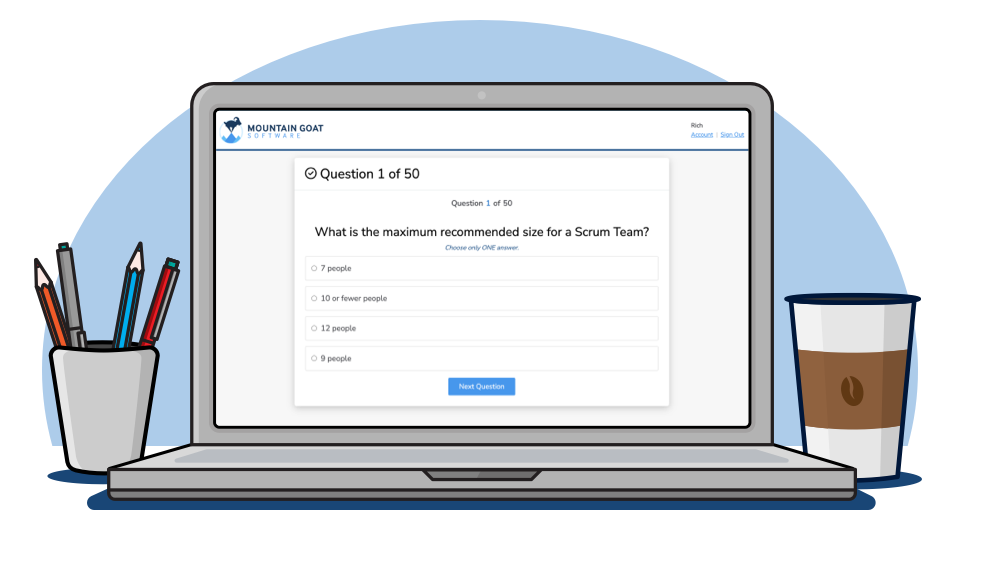Multitasking is a killer. It destroys productivity and tanks projects.
Not convinced? Let’s look at the evidence.
In their book Managing New Product and Process Development, Kim Clark and Steven Wheelwright studied the amount of time that individuals were able to spend on value-adding tasks.
Clark and Wheelwright found that with one assigned task, individuals were able to spend approximately 70% of each day on that task. That seems pretty good to me. In most companies the remaining 30% went to what I call being a good corporate citizen— answering email, attending meetings, having impromptu conversations with colleagues (about work or not), and so on.
According to the study, things look even better when we’re given a second task. In that case, we’re able to spend 80% of our time on those tasks.
Hmm. We have two data points so let’s draw a trend line, assuming a 14% increase with each new task. If multitasking across two tasks is good, then three, four, or five tasks must be even better, right?
 Wrong. Clark and Wheelwright found the opposite: When working on three tasks, our total time on-task drops to 60%, an average of 20% on each of three tasks.
Wrong. Clark and Wheelwright found the opposite: When working on three tasks, our total time on-task drops to 60%, an average of 20% on each of three tasks.
 In other words, when we have too much work in process (WIP), our productivity drops. When we have just enough work in process, our productivity reaches its peak.
In other words, when we have too much work in process (WIP), our productivity drops. When we have just enough work in process, our productivity reaches its peak.
The Clark-Wheelwright study is actually optimistic about the cost of multitasking. In the Psychology Today article “The True Cost of Multi-Tasking,” Weinschenk purports that multitasking is more rightly called task switching, and that the American Psychology Association has found that switching tasks reduces productivity by as much as 40%.
Are You Multitasking Right Now?
So I reiterate: multitasking might feel good, but it isn’t doing people or teams any favors.
When I teach classes on how to estimate and plan agile projects, I describe this phenomenon. It strikes such a chord of truth with everyone that they stop what they’re doing and become more attentive. (Did you catch that? They stop the other tasks they had been doing besides listening to the lesson.)
We have become accustomed to “working distracted.” For example, I taught an in-person certified Scrum training class to 30 people; 29 brought laptops. They were doing other work most of the day.
As the day progressed, it became clear that very little of what I was saying was actually being understood. Because of their inattention, they confused Scrum’s unique vocabulary and asked questions like, “What does the Sprint Master do with the project backlog during the daily sprint?”
The false efficiency they thought they were achieving by multitasking got in the way of their learning even the basics of what I was teaching. I wonder how well they performed that other work that was occupying the rest of their attention. (It’s even worse for virtual classes, where everyone is already on the computer anyway.) It’s hard to receive the benefits of agile training when you aren’t paying attention!
Multitasking Across Projects
Once I explain the hazards of individual multitasking in my classes, we talk about the dangers of organizations requiring us to multitask by spreading our attention and time across too many concurrent projects.
I met a database analyst once who was supporting six different projects and had been told a specific percentage of their time to spend on each (from 10% to 25%).
This type of task switching is a prioritization and decision-making problem that starts at the leadership level. A leader who assigns someone to multiple projects is demonstrating an unwillingness or inability to make a decision about the relative priorities of the projects. If everything is important—nothing is.
Break the Multitasking Habit to Be More Agile
Multitasking is a bad habit for which we all share responsibility. We willingly take on extra assignments, and often we don’t feel like we’re working hard enough unless we’re working on too many things.
The truth is, the most highly productive teams I’ve encountered are those that can bring an intense focus to their work. Not only do they work exclusively on what’s most important, they understand that to optimize their throughput they must minimize the number of different things they work on at any one time.
To succeed with agile, all individuals, teams, and organizations need to bring this same focus to the work they do.
Last update: February 28th, 2025









